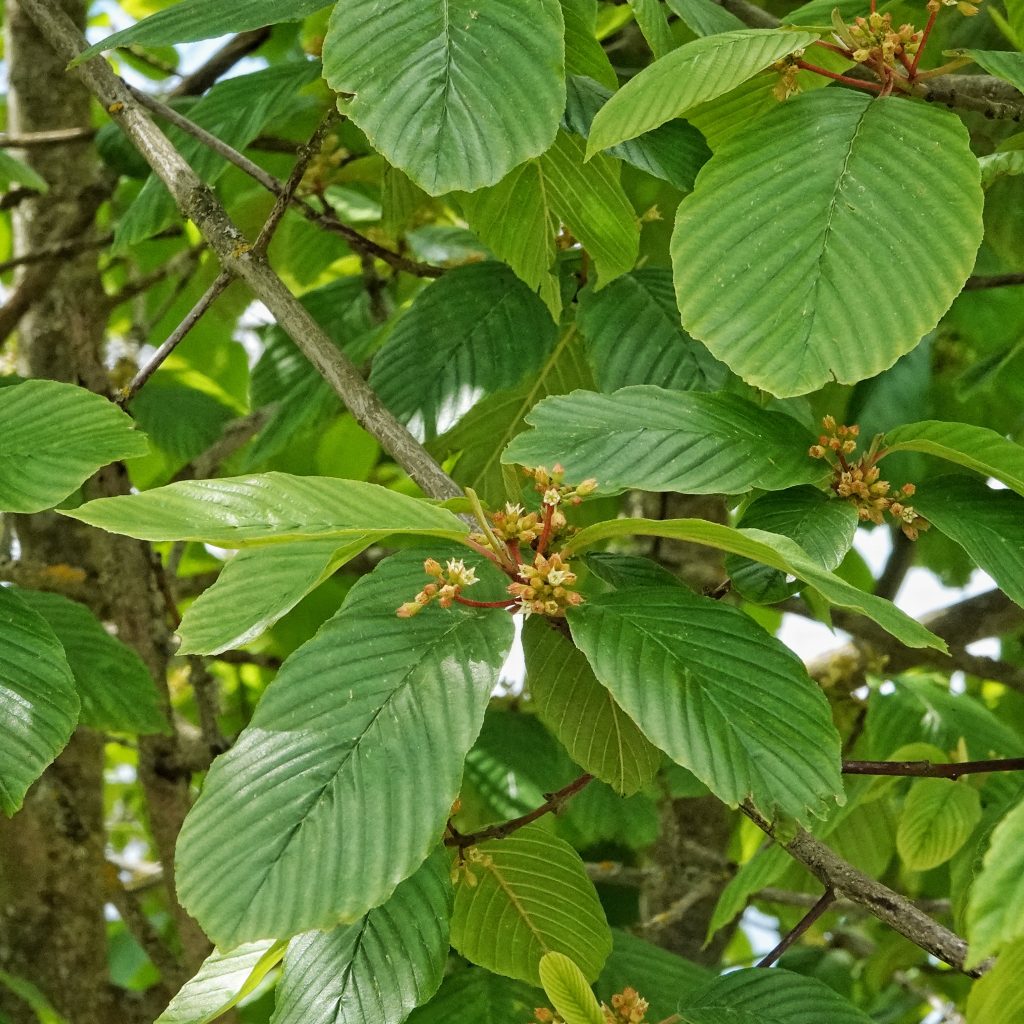
I don’t often find Frangula purshiana (also known as cascara buckthorn, bearberry, cascara, cascara sagrada, chittam bark, coffee-tree) in isolated spots where the whole tree can be photographed, and before I encountered this tree on the Ridgefield NWR in late May, I had never seen it’s delicate little flowers. As I’ve mentioned before I used to confuse this tree with red alder, which also has deeply veined leaves. But eventually I realized that the smooth margin of the leaves of cascara could be conflated with their smooth fruit, as could the heavily toothed leaf margins of red alder with the jaggedness of its cones. Though they are called buckthorn (family Rhamnaceae), members of the genus Frangula lack thorns or spikes.
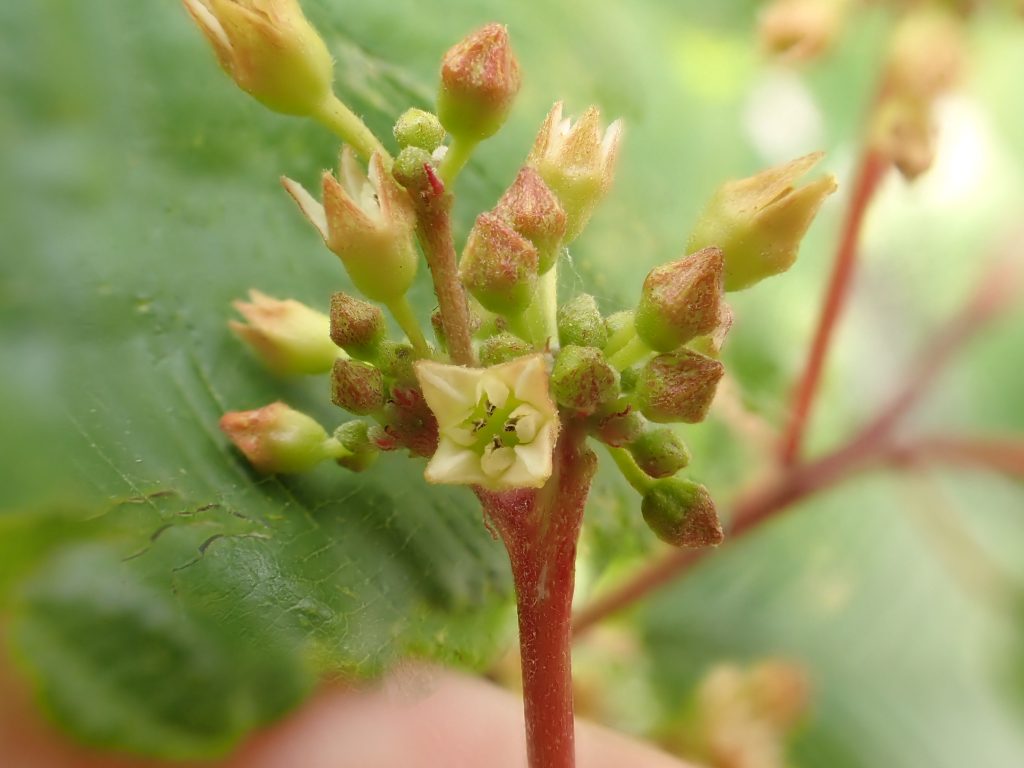
Though indigenous peoples had other uses for this tree, it’s primary application was using the bark as a purgative, cathartic and laxative (hence chittam bark). They also used the bark to poultice wounds, get rid of intestinal worms, and as an emetic. There were conflicting views about the fruits, which were also used as an emetic by some tribes, and were considered to be poisonous by others, while still others utilized them as a food source. They used the wood for adze handles, and made a green dye from the bark.
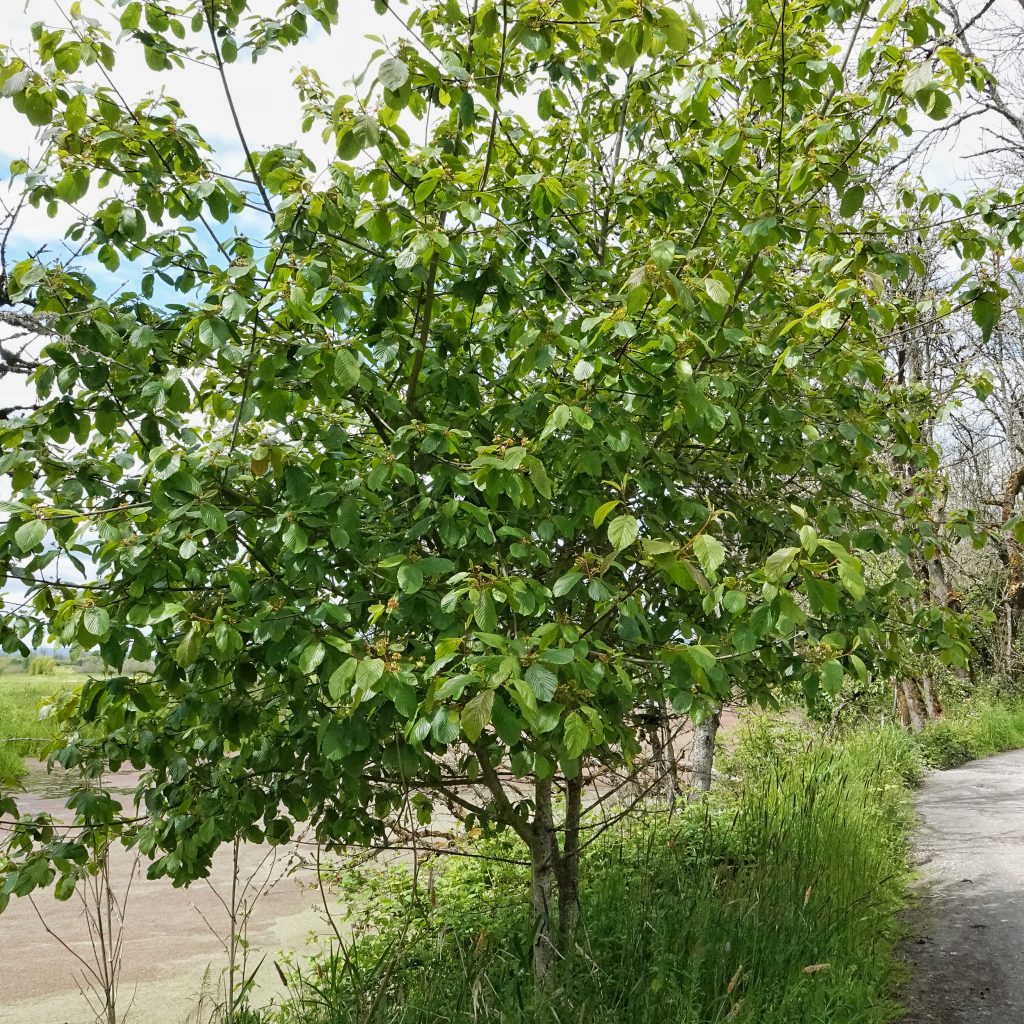
Using the bark of this tree (although it seems to me one would have to fight their way through a fair amount of lichens to get to it) as a laxative continued until fairly recently, and many trees were destroyed to supply raw ingredients to pharmaceutical companies, who processed up to 5 million pounds of bark per year. But in 2002 the FDA banned its use in laxatives because of adverse side effects from long term usage. Hopefully there was enough stock remaining for this species to come back from all of that harvesting. It is a valuable resource for a variety of wildlife, and is aesthetically handsome, with a nice texture from its leaves, and has found a home in many a garden devoted to native plants. But even if it was ugly and useless, it is still an indigenous life form that deserves to be treated with more respect than to be stripped of its skin to profit Big Pharma and serve our culture’s desire for an empty colon, especially when we won’t do the simple things required to ensure our own regularity. Stepping off my soapbox now.
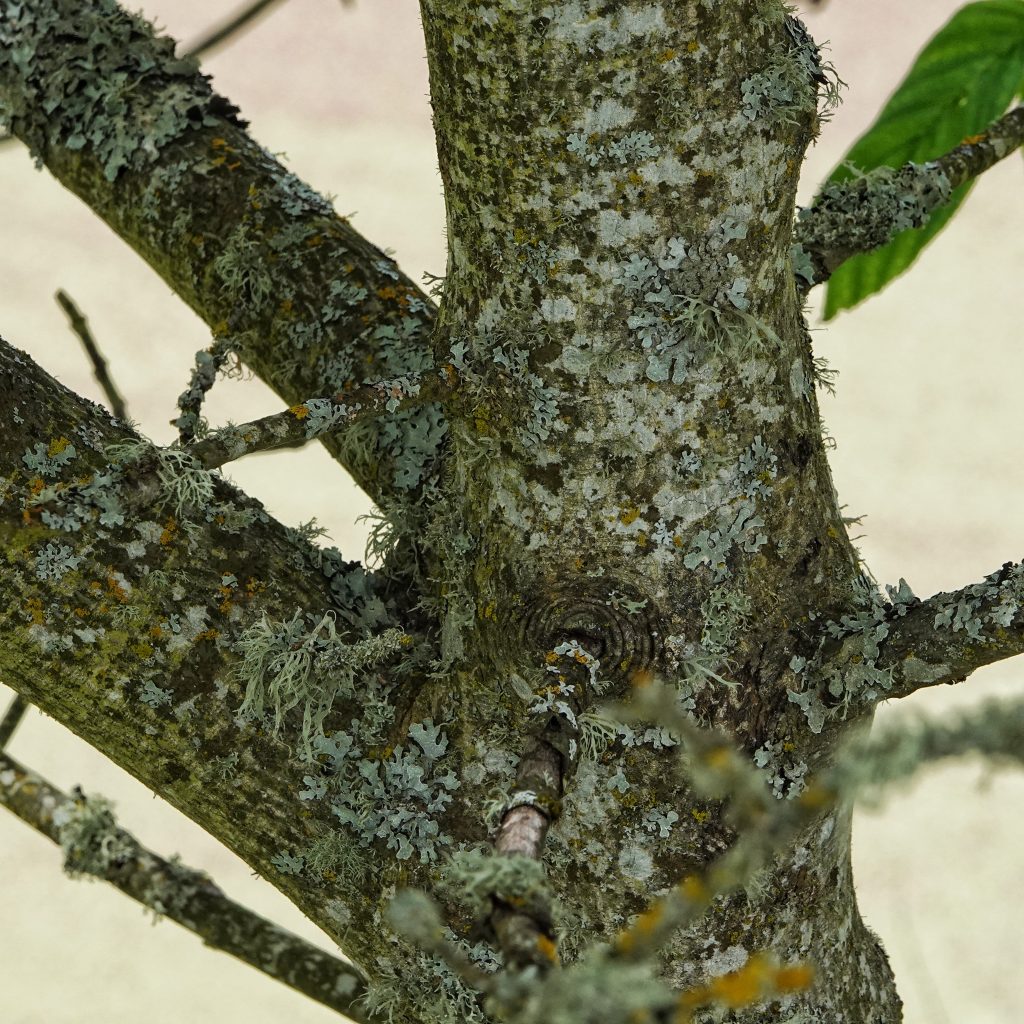
Description-Tree or large shrub (up to 33’ tall), with large (up to 6”), alternate, oblong to egg shaped leaves that are smooth on the margins (entire) and deeply veined; veins are opposite, parallel, usually at least 10 pairs; bark is silvery grey and twigs are brownish yellow; inflorescence is a rounded cluster with at least 8 flowers, calyx lobes erect and fleshy, flowers are small (4-5mm wide) with 5 sepals and 5 petals, cream to greenish, with petals smaller than sepals, and sepals hairy; fruit purple black.
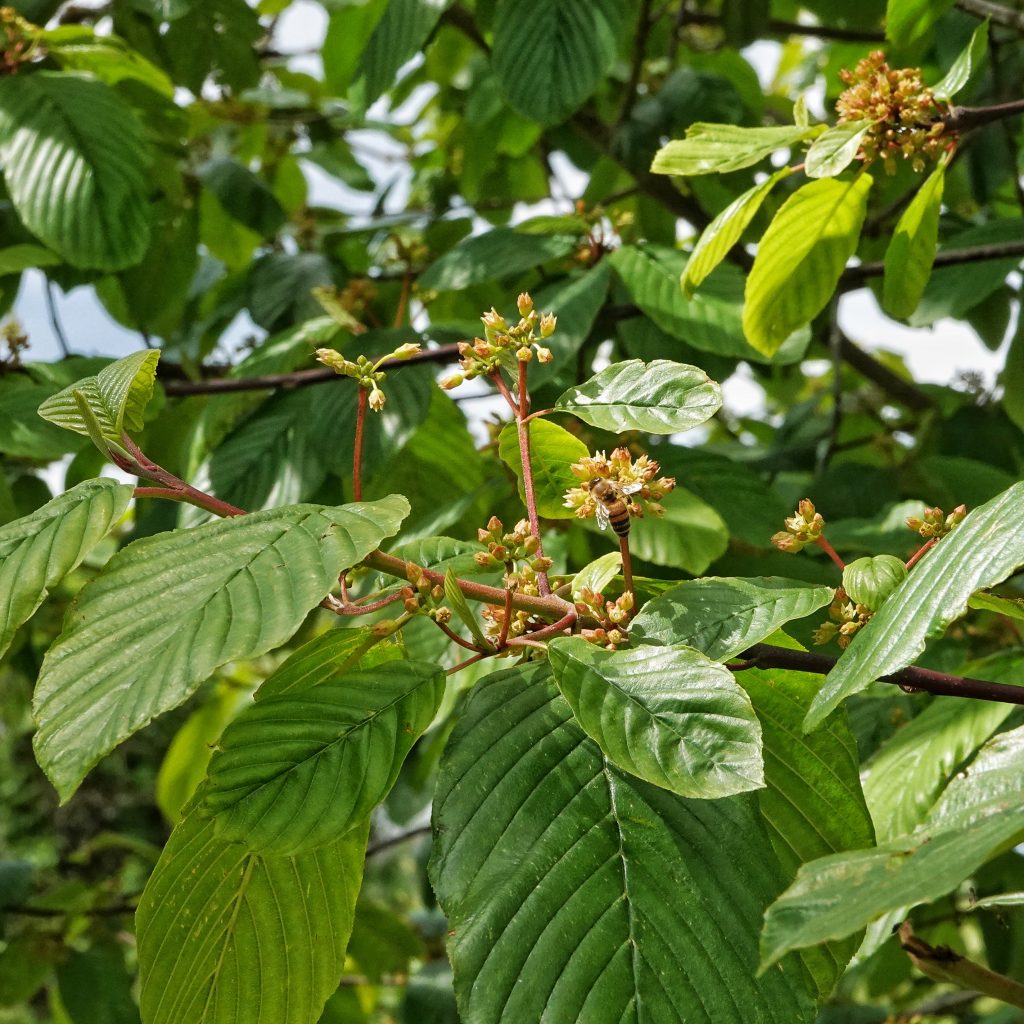
Similar species-Other Frangula sp. have shorter, narrower leaves, are smaller overall and more shrubby, and are only found in s Oregon and n California; Rhamus sp. have calyx lobes spreading and thin; R. alnifolia has leaf margins serrate, grows primarily in montane regions east of Cascades; other Rhamnus sp. have much smaller leaves; Alnus sp. have toothed leaves.
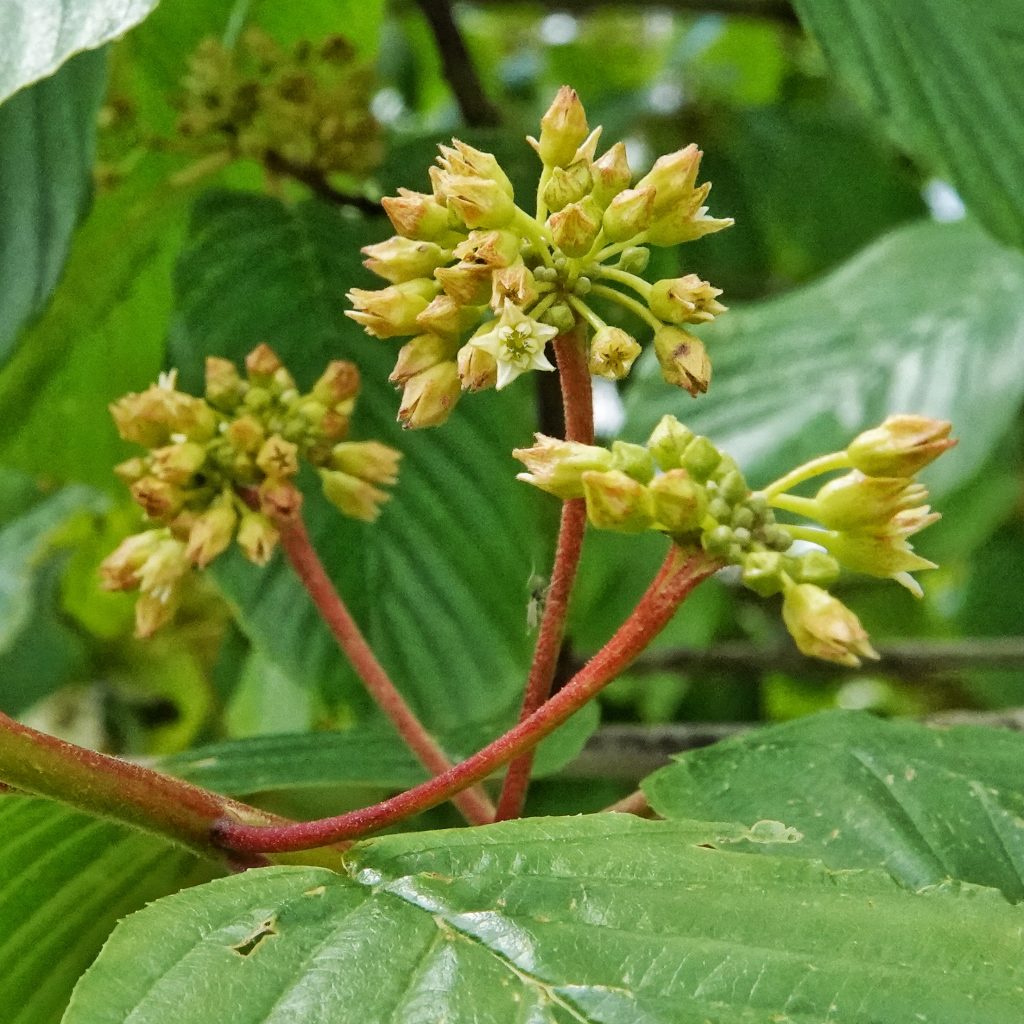
Habitat-Forest and woodland understory and margins, up to 5,000’ elevation.
Range-Western North America; in our region it is found from the east slope of the Cascades to the Pacific, in sw Oregon and nw California, and in montane areas east of the Cascades.
Reproductive timing-April through June, depending on elevation
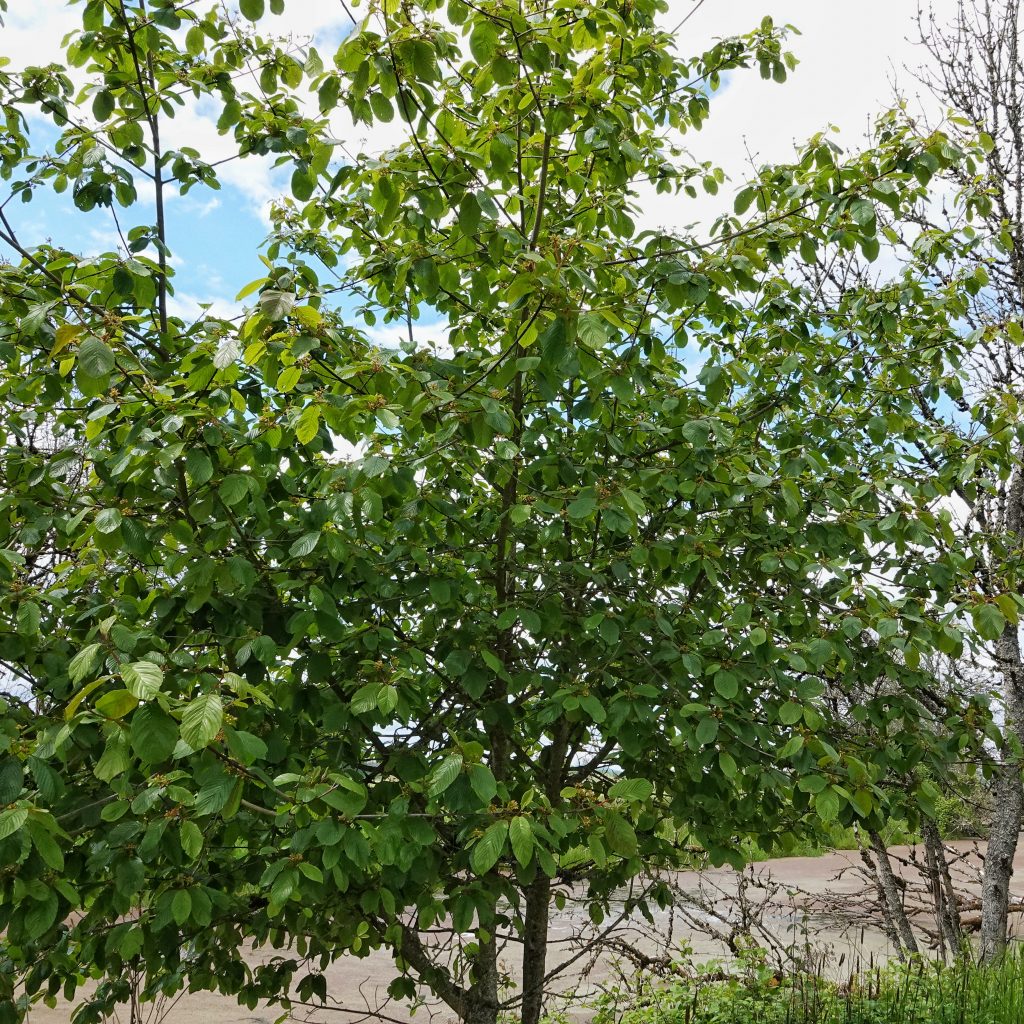
Eaten by-It is used as a larval host by the butterflies Papilio eurymedon and Strymon mellinus, and by many moths, including Triphosa haesitata, Sericosema juturnaria, Hyalophora euryalus, Eupithecia spp., the gall moth Sorhagenia nimbosus, and leaf mining moths in the genera Marmara and Stigmella; western tanagers, black-headed grosbeaks, band-tailed pigeons, and robins are among the many birds that eat the fruits, as do frugivorous mammals such as bears, opossums, raccoons, squirrels, etc.; hummingbirds and pollinating insects visit the flowers.
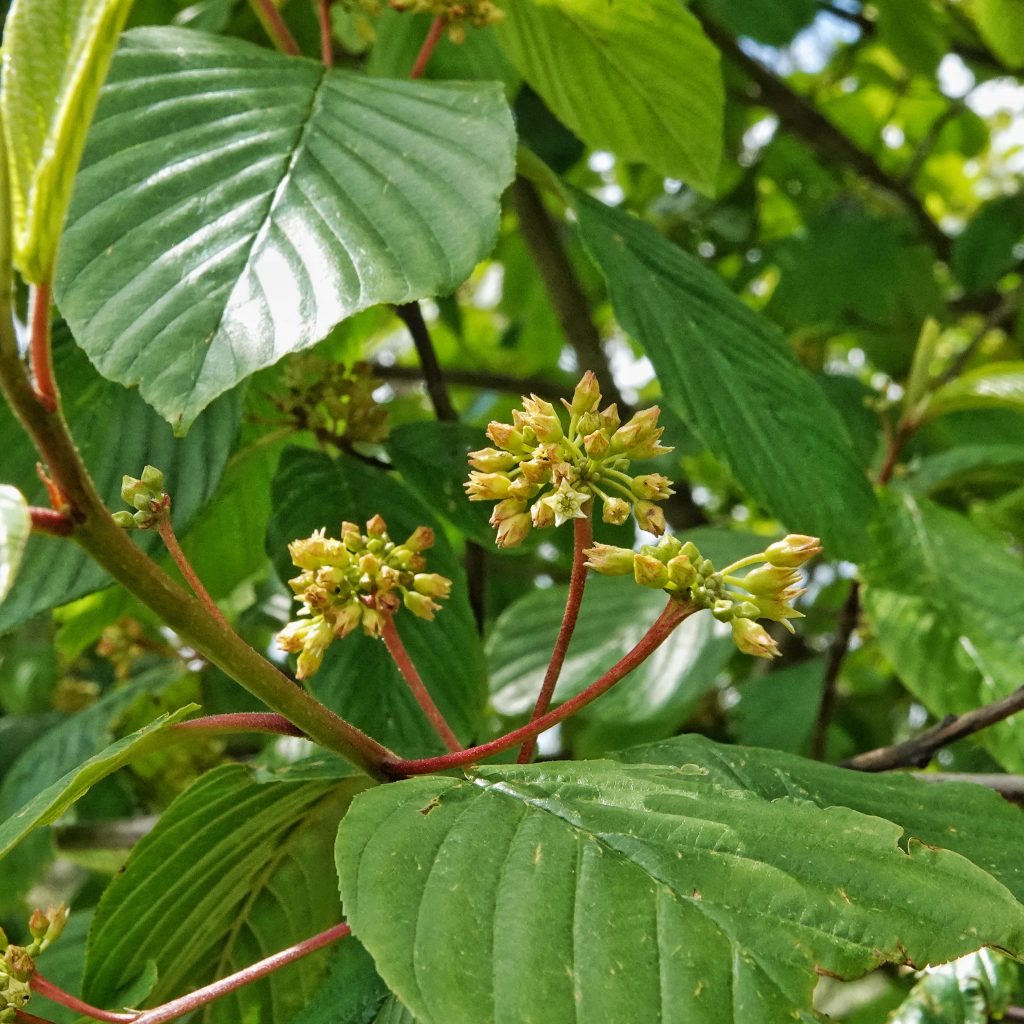
Etymology of names–Frangula is from the Latin word for ‘buckthorn’, and is also the basis for the word ‘frangulanin’, a peptide alkaloid present in members of this genus. The specific epithet purshiana honors FT Pursh (1774-1820), a German botanist who made significant contributions to the knowledge of North American flora.
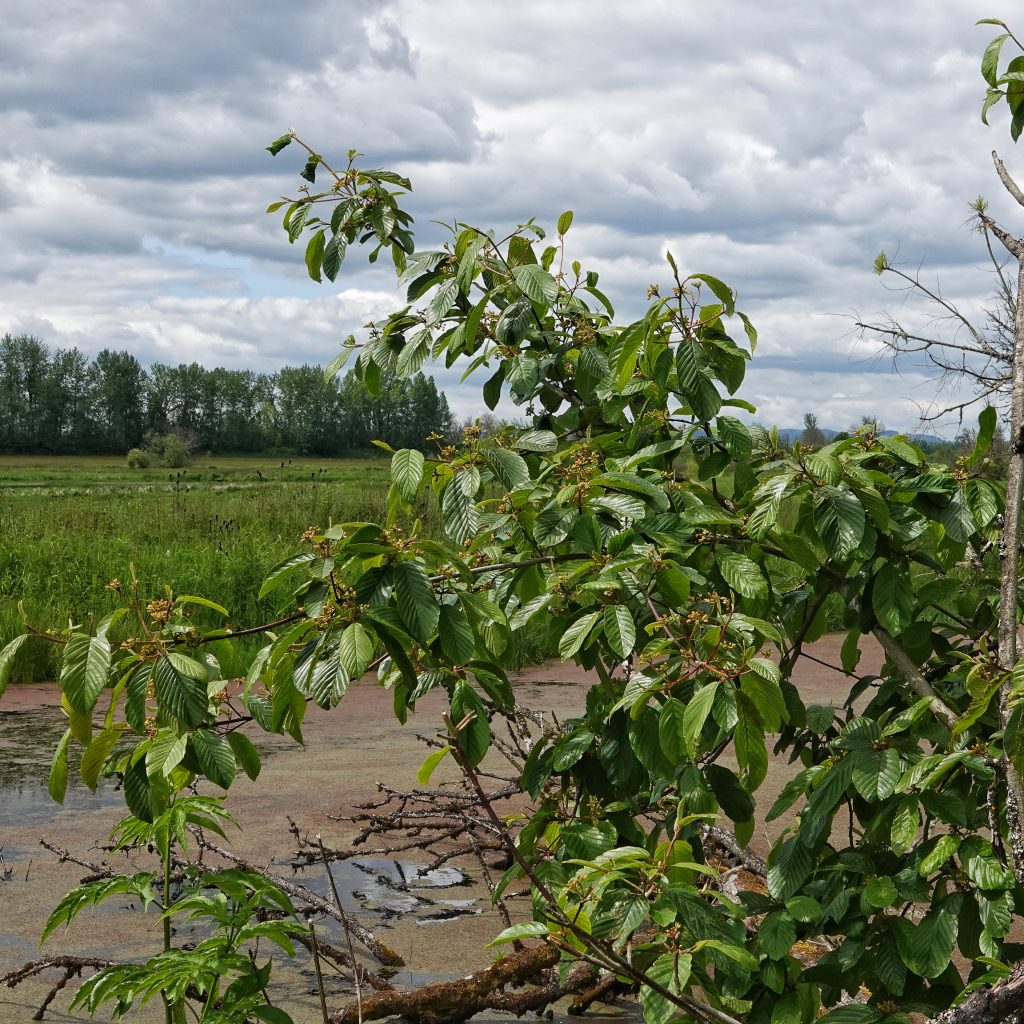
https://www.fs.fed.us/database/feis/plants/shrub/frapur/all.html
http://www.pnwplants.wsu.edu/PlantDisplay.aspx?PlantID=333
BRIT – Native American Ethnobotany Database
http://www.efloras.org/florataxon.aspx?flora_id=1&taxon_id=250101357
https://biology.burke.washington.edu/herbarium/imagecollection/taxon.php?Taxon=Frangula%20purshiana
https://en.m.wikipedia.org/wiki/Frederick_Traugott_Pursh
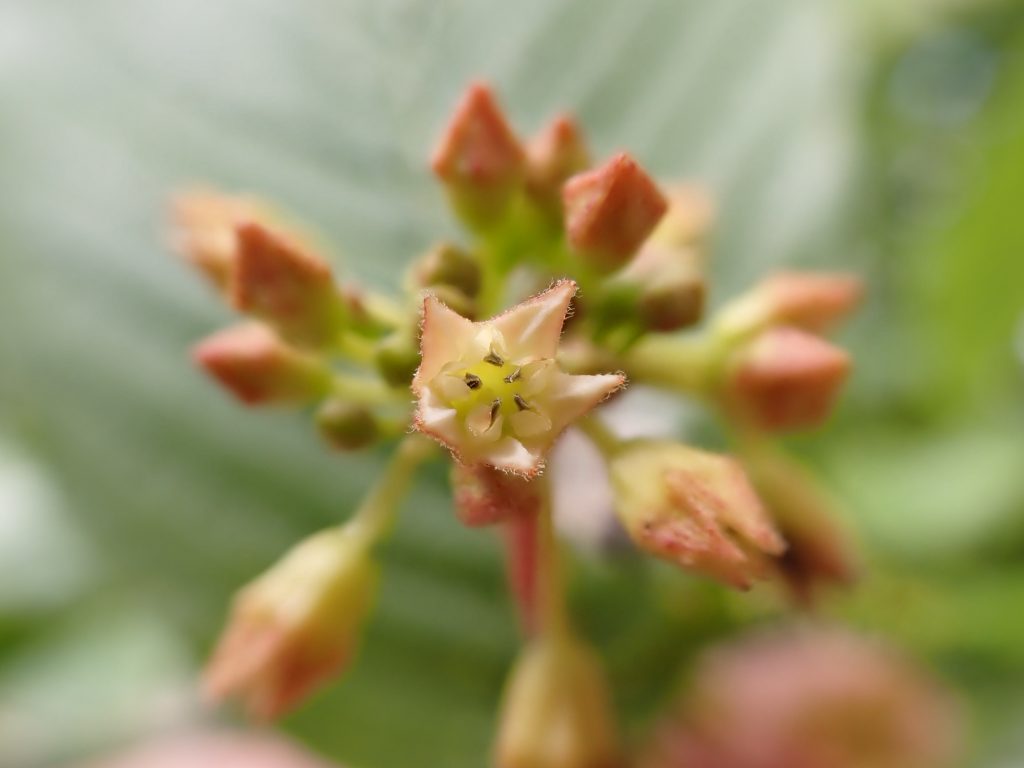
Interesting tree Dan. A number of years ago as we went about restoring an old dairy farm, Alder Creek Farm in Nehalem, one of the longtime locals who helped us with tractor mowing suggested we plant it. His thinking was based on observation that Cascara did not suffer from elk grazing because it gave them the runs and he pointed out the the fruits were popular with bears. Bears having no qualms about being notoriously fast processors. On a partially log forest holding (Headwaters) I observed Cascara leaping way ahead of Alder in the natural regrowth ( We don’t use herbicide). Between the Red Elderberry and the Cascara we have a kind of Ban tailed Pigeon heaven during this stage of the forests recovery.
Thanks for sharing that! I’ll bet the Band-tailed pigeons do love you! Thanks for doing that work, and for making me realize I hadn’t included bears in the category of ‘eaten by’!
This installment was an eye opener for me. I had no idea that the bark was widely harvested by big pharma. As always, thanks for the info.
Thanks for your appreciation, Michael! It was eye opening for me also.
Great post, and very fine soap box! Don’t stop now.
Thanks, Trevor!
Thanks for Frangula story. Planted Cascara last year in semi wild suburban area. It’s settling in nicely near Twinberry Though deer browse both so must be fenced. Looking forward to seeing those marvelous flowers in a few years.
Thank you for your appreciation!
Cascara is my favorite native wildlife attracting tree, we maintain several groves of it. What I really like about the tree is the long period over which they bloom attracting pollinators as well as finches that eat the anthers of the flowers. The long bloom time means that the fruits also ripen over a long period attracting birds for weeks instead of ripening all at once. Another nice write-up Dan.
Thank you, Wilson!